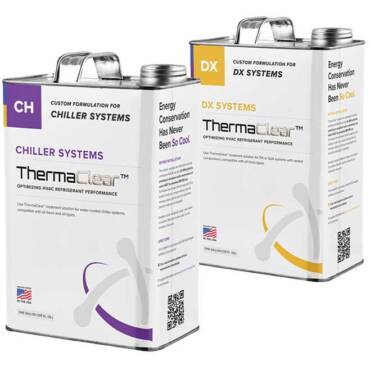First, start pressure profiling your customer’s existing equipment and ductwork, then measure or plot the fan airflow. This needs to happen on ALL sales calls.
I know what you’re thinking: my salesperson doesn’t own a drill, nor would I trust him to use one. Installing a test port isn’t rocket science. Give your salespeople some credit. With some guidance and an inexpensive 12-volt drill, they can take the measurements to analyze your customer’s current duct system.
By the way, I am not suggesting that salespeople must be capable of analyzing the data they collect. A handoff might need to occur within your company to someone capable of diagnosing any current or future airflow issues.
The goal is to determine where there are problems in the duct system that will hurt equipment performance. Identifying issues upfront allows you to make recommendations to customers before installing any new equipment. You will prevent problems upfront by presenting options to ensure their equipment performs as intended.
Next, compare the pressure measurements to static pressure budgets. Don’t forget that if the fan airflow is low, any pressure measurement will get worse if you increase the fan airflow. This often happens with new installations, especially when replacing a furnace or air handler that had a permanent split capacitor (PSC) blower with a variable speed or constant torque motor.
When you notice a red flag, plan for future duct pressures by recommending Air Upgrades™. I wrote another HVAC School article called “Replacing Residential HVAC Equipment with Predictable Results.” In this article, I discuss how to use Fan Law 2 when planning for a system replacement.
Include Enhanced Filtration
Most companies are conditioned to look at upgraded filtration as an option. When you consider Total External Static Pressure (TESP) and filter pressure drops, you realize that a good media filter with more surface area is a necessity, not an option.
Proper filtration should either be sized by air velocity or pressure drop in a retrofit situation. Filters are one of the biggest choke points directly impacting TESP and fan airflow. By reducing the choke point, you also reduce TESP.
I see HVAC companies installing small media filter sizes like 16”x20” x 4” or 16”x25”x4”. If you have the room to install a larger media filter like a 20”x25”x4”, a 25”x25”x4” or even a 31”x28”x4”, never use the smaller filter, even for smaller equipment.
My philosophy for filter sizing is, “go big or go home!” This is the easiest way to reduce static pressure. I have installed 25”x25”x4” filters on 40,000 BTU furnaces and 1.5-ton condensers.
Remember, the slower air moves through a filter, the more efficient the filtering media is. Increasing its surface area is the only way to reduce air velocity through a filter. Increasing filter size allows for even filter loading and longer filter life.
Another benefit of low velocity is reduced filter bypass. Have you ever noticed an evaporator coil plugged up with a media filter installed? Duct leakage and filter bypass are the main reasons an evaporator gets plugged.
Slow down the air, and you catch more airborne particulates, reduce TESP, and increase fan airflow.
When the ball drops at midnight, consider taking your installations to the next level by implementing proper equipment sizing, pressure profiling on sales calls, and including upgraded filtration with your installations. With a little work and persistence, 2025 could be the beginning of your path to performance.
Adam Mufich serves the HVAC industry as a content developer and instructor for National Comfort Institute, Inc. (NCI). NCI specializes in training that focuses on improving, measuring, and verifying HVAC and Building Performance.
If you’re an HVAC contractor or technician interested in learning more about airflow diagnostics, contact Adam at ncilink.com/ContactMe. NCI’s website www.nationalcomfortinstitute.com is full of free information to help you improve your professionalism and strengthen your company.
Whether you require installation, repair, or maintenance, our technicians will assist you with top-quality service at any time of the day or night. Take comfort in knowing your indoor air quality is the best it can be with MOE heating & cooling services Ontario's solution for heating, air conditioning, and ventilation that’s cooler than the rest.
Contact us to schedule a visit. Our qualified team of technicians, are always ready to help you and guide you for heating and cooling issues. Weather you want to replace an old furnace or install a brand new air conditioner, we are here to help you. Our main office is at Kitchener but we can service most of Ontario's cities
Source link


